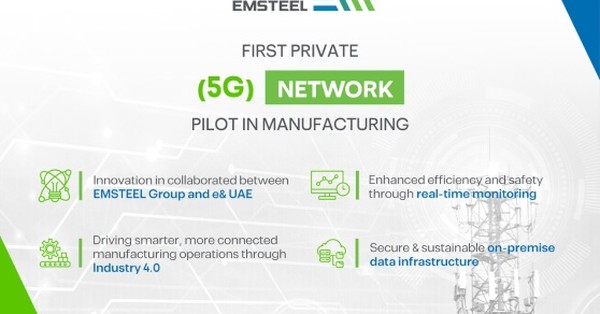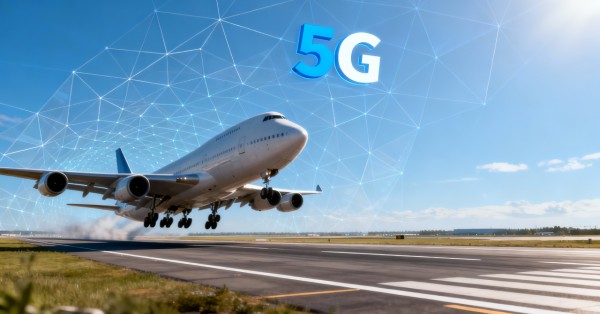Tariffs can have a multifaceted impact on the advancement of AI and automation, acting as both a potential hindrance and, paradoxically, a possible catalyst in certain areas. Integrating the “anti-innovative approach” of the EU AI Act alongside the impact of tariffs paints a more complex picture of the challenges facing AI and automation advancement.
Tariffs and the AI Arms Race: Disrupting Innovation and Supply Chains
- Increased Costs of Components: Many AI and automation technologies rely on specialized hardware components like semiconductors, sensors, GPUs, and robotic arms, often manufactured or assembled in specific countries. Tariffs on these imports directly increase the cost of production for companies developing AI and automation solutions. For instance, once implemented (after the 90 days delay) tariffs imposed by the Trump administration will increase the cost of essential AI hardware imported from China. This can lead to higher prices for AI-powered products and services, potentially slowing down their adoption, especially for small and medium-sized enterprises with tighter budgets.
- Supply Chain Disruptions: Tariffs will disrupt the established global supply chains, forcing companies to seek new suppliers or alternative manufacturing locations. This will lead to delays, increased logistical complexities and potential compromises in the quality or performance of components, at least in the short term, while new supply chains are established. The need to re-evaluate sourcing strategies can divert resources and attention away from core research and development efforts.
- Reduced International Collaboration: Despite tech cartel dominance, AI research and development thrive on international collaboration and the free exchange of ideas, talent, and data. Tariffs and the geopolitical tensions they create can discourage cross-border partnerships, potentially limiting access to diverse perspectives, datasets, and specialized expertise, which are crucial for innovation in AI. Sovereign friction will mean that tariffs will discourage international collaboration, which is crucial for AI’s advancement.
- Slower Adoption Rates: Higher costs resulting from tariffs will make AI and automation technologies less accessible to a wider range of businesses and industries. This will slow down the overall rate of adoption. One bonus is that it will potentially hinder the collection of real-world data deemed so necessary for training and improving AI algorithms.
Tariffs in the AI Arms Race: Can Domestic Innovation Fill the Gap?
- Increased Domestic Innovation and Investment: Tariffs can incentivize domestic production of key components and encourage investment in local research and development in AI and automation. By making imported goods more expensive, tariffs can even create a competitive advantage for domestic manufacturers and technology companies. For example, tariffs could encourage companies to invest more in domestic AI infrastructure and the development of local AI hardware.
- Acceleration of Automation: Faced with increased labour costs due to tariffs incentivizing domestic production or as a response to potential labour shortages, companies might accelerate their adoption of automation technologies to improve efficiency and reduce reliance on human labour. Economists I know suggest that tariffs, bolstered by advancements in AI and robotics could increase incentives for companies to automate human labor entirely.
- Focus on Software and Efficiency: Higher hardware costs due to tariffs should in theory drive companies to focus more on developing AI software that is more efficient and can operate on less specialized or more readily available hardware. This could lead to innovations in algorithm design and edge computing solutions using Small or Specialized Language Models (SLMs).
- Supply Chain Diversification and Resilience: While initially disruptive, tariffs will force companies to diversify their supply chains across multiple countries, reducing their dependence on a single source. This can lead to more resilient and geographically distributed supply networks in the long run, potentially mitigating future risks.
Long-Term Consequences for Europe in the Global AI Arms Race
- The actual impact of tariffs on AI and automation advancement is likely to be complex and depend on various factors, including the specific tariffs imposed, the responses of different countries and companies, and the countering pace of technological innovation.
- While tariffs might offer some short-term benefits to domestic industries, the long-term negative effects on cost, supply chains, and international collaboration would outweigh these benefits, ultimately hindering the overall progress of AI and automation.
- The interconnected nature of the global technology ecosystem means that tariffs imposed by one country can have ripple effects across the world, impacting businesses and research efforts in unexpected ways.
Regulation vs. Acceleration: How the EU AI Act Hampers the AI Arms Race
The EU AI Act, while aiming for ethical and trustworthy AI has in itself raised concerns about its potential to stifle innovation through several mechanisms
- Overly Broad Definitions and Classifications: Critics argue that the Act’s definition of AI is too broad, potentially encompassing a wide range of software and algorithms not traditionally considered high-risk AI. Similarly, the risk-based classification system, particularly the “high-risk” category, may be applied too extensively, capturing many AI applications currently being developed by startups and SMEs. Research suggests a significant percentage of AI startups believe the Act will slow down innovation in Europe due to these broad classifications.
- High Compliance Costs and Burdens: The stringent requirements for high-risk AI systems, including risk management, data governance, technical documentation, and human oversight, can impose significant financial and administrative burdens, especially on smaller companies with limited resources. These high compliance costs could make certain AI projects economically unfeasible or delay their market entry, giving a competitive advantage to companies in regions with less stringent regulations.
- Vague Definitions Leading to Overly Cautious Interpretations: The lack of precise definitions for various risk categories within the Act could lead to overly cautious interpretations by companies, forcing them to comply with unnecessarily high-risk requirements. This uncertainty can hinder experimentation and the development of novel AI applications.
- Vague Definitions Leading to Overly Cautious Interpretations: The lack of precise definitions for various risk categories within the Act could lead to overly cautious interpretations by companies, forcing them to comply with unnecessarily high-risk requirements. This uncertainty can hinder experimentation and the development of novel AI applications.
- Focus on Risk Mitigation Over Benefit Consideration: Some argue that the EU AI Act disproportionately focuses on mitigating potential risks associated with AI while giving less consideration to the potential benefits and societal advantages that AI innovation can unlock, particularly in areas like healthcare. This risk-averse approach could slow down the adoption of beneficial AI technologies.
- Complex and Overlapping Enforcement Structures: The Act’s interaction with existing EU laws and the creation of new enforcement bodies at both the EU and national levels could lead to regulatory redundancies, confusion, and increased compliance complexity for companies operating within the EU.
- Potential Brain Drain: Concerns exist that the strict regulatory environment of the EU AI Act could incentivize AI startups and talent to relocate to regions with more innovation-friendly regulations, leading to a “brain drain” and hindering the growth of the European AI ecosystem.
Double Burden in the AI Arms Race: Tariffs and Compliance Challenges
When considered together, tariffs and the EU AI Act will create a challenging environment for AI and automation advancement.
- Compounding Costs: Tariffs increase the cost of essential hardware components, while the EU AI Act increases the compliance costs associated with developing and deploying AI systems. These combined cost pressures can significantly raise the barrier to entry for new AI and automation ventures, especially in the EU.
- Reduced Competitiveness: European companies developing AI and automation technologies might face a double disadvantage: higher input costs due to tariffs and higher compliance costs due to the AI Act, making them less competitive globally compared to companies operating in regions with lower tariffs and less stringent AI regulations.
- Discouraging Investment: The uncertainty and potential burdens created by both tariffs and the EU AI Act could discourage investment in AI and automation within the EU, further hindering innovation and slowing down adoption rates. Investors might be more inclined to support ventures in less regulated and tariff-burdened markets.
- Slower Adoption and Data Acquisition: Higher costs due to tariffs and the potential for slower innovation due to the AI Act could lead to slower adoption of AI and automation technologies within the EU. This slower adoption can, in turn, limit the availability of real-world data crucial for training and improving AI algorithms developed within the region.
Potential Positive (albeit debatable) Aspects
It’s worth noting that proponents of the EU AI Act argue that its focus on ethical and trustworthy AI could, in the long run, foster greater public trust and acceptance of these technologies, potentially leading to wider adoption. Similarly, tariffs could, in theory, spur domestic innovation in both hardware and software within the EU, although this is not the prevailing expert opinion.
EU Reconsiders AI Regulation Amid Pressure from Global AI Arms Race
Interestingly, there are recent reports indicating that the EU is now considering options to potentially rework parts of the AI Act to reduce the regulatory burden on companies and boost investment in AI, partly in response to concerns about hindering innovation and the impact of global competition and tariffs. This suggests an evolving understanding of the delicate balance between regulation and fostering technological advancement.
In conclusion, the EU AI Act, with its focus on managing risks associated with AI, coupled with the cost-increasing and supply-chain-disrupting effects of tariffs, presents a significant challenge to the advancement of AI and automation within the European Union. The potential for increased costs, reduced competitiveness, and a slower pace of innovation raises concerns about the EU’s ability to remain at the forefront of this critical technological landscape. The recent signals of a potential re-evaluation of the AI Act suggest that policymakers are grappling with these complex dynamics.
Written by Neil Gentleman-Hobbs, smartR AI







































